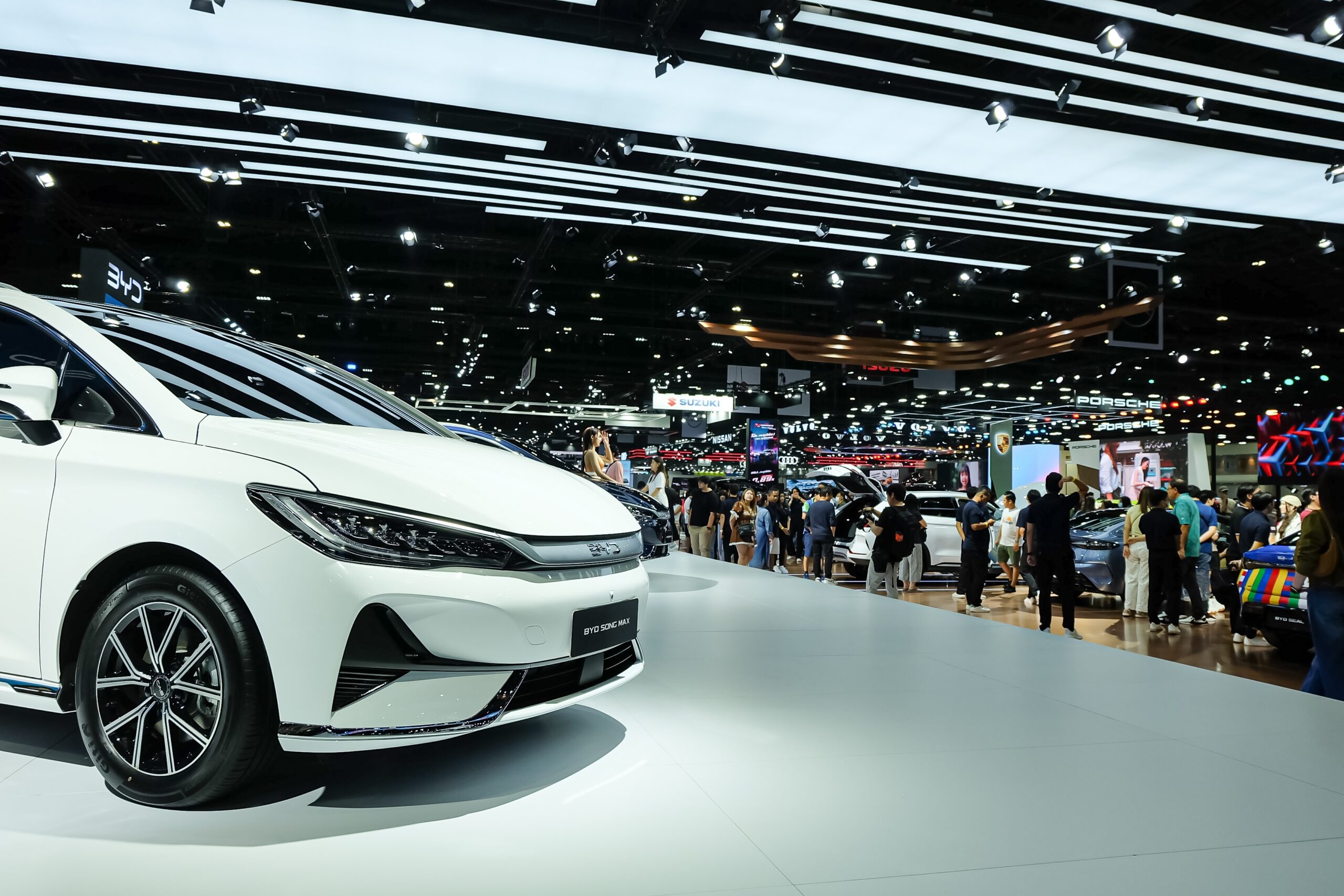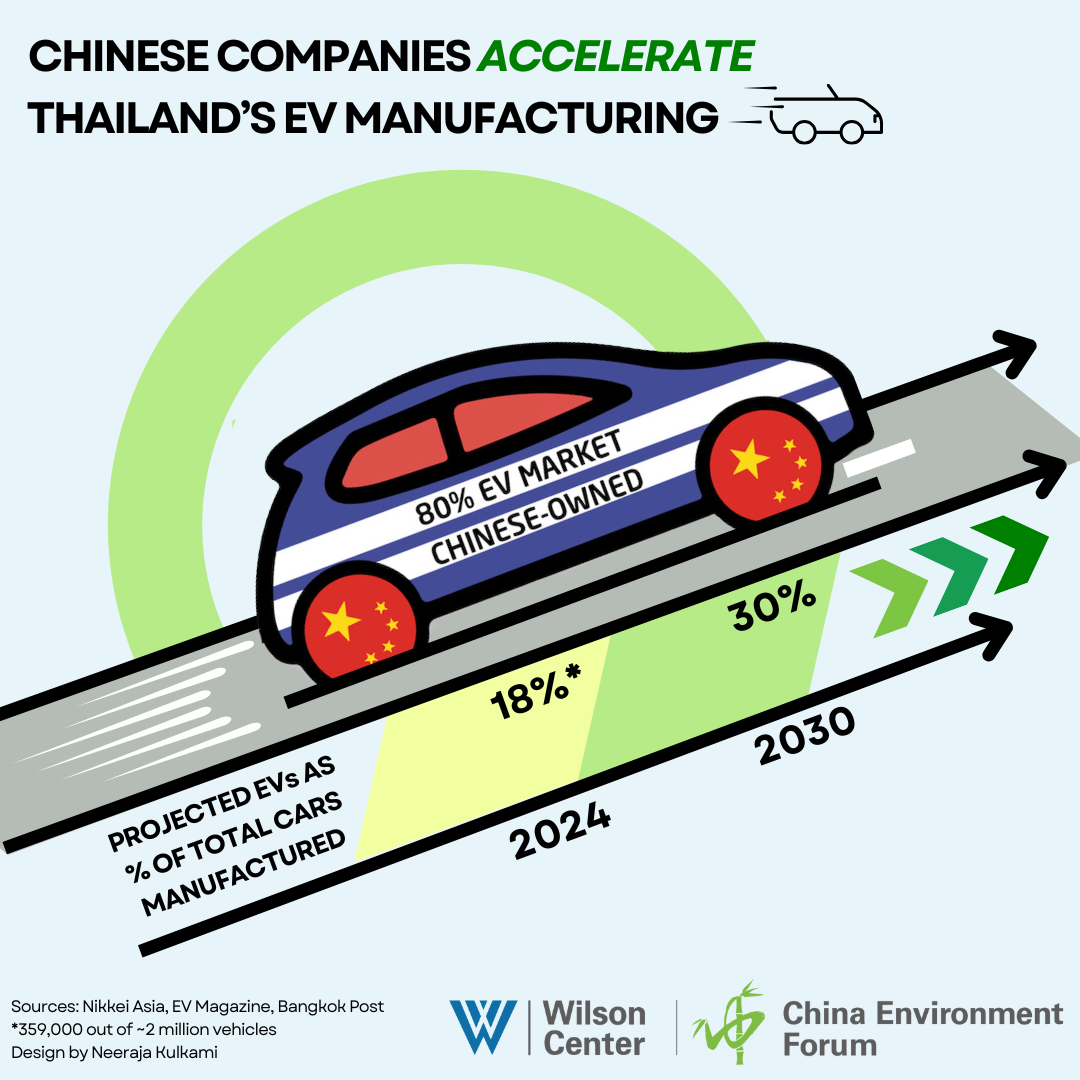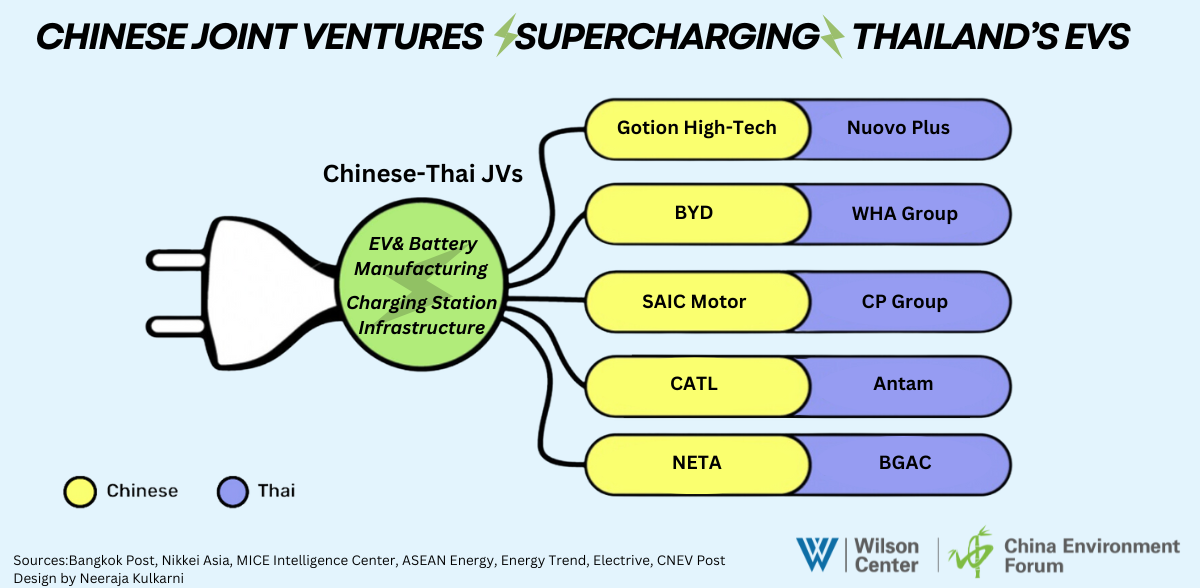-
Charged Up: China Driving Thailand’s EV Industry
January 9, 2025 By Nayan SethIn April 2024, Thai government officials traveled to the Chinese provinces of Fujian and Guangdong with a single-point agenda – convincing the leading Chinese electric vehicle (EV) battery makers to invest in their country. Two months later, the global leader in the EV battery industry, China’s Contemporary Amperex Technology Limited (CATL), announced an initial investment of over $100 million to set up an assembly plant in collaboration with a local Thai state-owned company.
The pledge was the outcome of Thailand’s aggressive push to build domestic capacity to become a regional hub for both midstream and downstream sectors of the EV supply chains in Southeast Asia.
As Chinese EV makers and battery manufacturers are being walled off from the United States and part of Europe, Thailand and other countries in Southeast Asia are rolling out the red carpet by offering tax incentives, cash grants, and subsidies.
In the past few years, major Chinese EV makers such as BYD, MG, SAIC Motor, and Great Wall Motor have invested heavily in localization efforts in Thailand. The potential localization of EV supply chains in Southeast Asia presents a promising model where the Chinese companies could play a pivotal role in enhancing industrial capacity, generating value-added supply chains and creating local jobs.
This could help the region achieve the twin long-term objectives of sustainable economic growth and climate goals. However, challenges of sluggish local demand in the short-run and the negative impact of EV promotion on the existing internal combustion engine vehicle (ICEV) industry remain.
China’s Dominant Role in Thai EV Market
Long before the China-led EV revolution reached Thailand, the country’s car market was dominated by Japanese auto manufacturers. Since the 1970s, Japanese car companies have accounted for almost 90% of the total market share. Over the years, Thailand became a major regional hub, exporting over 70% of the locally produced vehicles.
Now, Chinese EV makers are not just challenging the Japanese pole position in total car sales, but are also laying the foundation for a larger parallel EV supply chain in the country.
Recognizing Chinese leadership in the sector and its potential for building domestic capacity, the Thai government, in 2022, announced a slew of measures – providing cash subsidies, corporate tax and import tariff exemptions, and a streamlined approval process. The incentives have spurred investments that could fuel the Thai government’s 30@30 plan to make EVs account for 30% of domestic vehicle production by 2030.

As a consequence of comprehensive policy support, Chinese EV manufacturers have pledged more than $1.4 billion in Thailand’s EV market. The growth in sales, too, has been exponential.Dr. Sineenat Sermcheep, the Director of Research Affairs at the ASEAN Studies Center at Bangkok’s Chulalongkorn University, attributes a part of its EV success to Thailand’s previous experience in assembling fossil fuel-run vehicles. “One thing we clearly have an advantage is in the assembly section and we still have to hold on and try to adapt ourselves to remain competitive.”
Apart from attracting the downstream vehicle assembly and production sector, the government is also tapping the midstream tech-intensive battery cell production. Here too, Chinese companies are taking a lead. In addition to CATL, Chinese battery makers such as Gotion High-tech and SVOLT are setting up battery plants in Thailand.
Thai authorities are also encouraging Chinese automakers to source their auto parts locally, in an attempt to create a sustainable ecosystem. The government is also in talks with them to ink tech transfer agreements to build capacity and technical knowledge base in Thailand.
Along with the rising share of EVs in the domestic market, Thailand is well-positioned to emerge as a regional EV hub and a source of exports. In 2023, the country reported over 300% rise in export of EVs, with Singapore, Laos, and Cambodia as its biggest exports markets.
While its share in the global EV exports is still low, with Chinese company “horsepower,” the growth potential in Thailand’s EV sector is promising.
Lessons from EV Capacity Building Efforts
The Chinese-Thai partnership in building out Thailand’s EV supply chains holds valuable lessons for Chinese companies aiming to invest in Southeast Asia’s clean energy sectors. Developing countries seek to create domestic capacity building and become stakeholders in the impending energy transition. They are careful to avoid the extractive nature of investments of the past and are interested in setting up value-added industries to promote low-carbon growth. Thailand’s attempt to indigenize a portion of the EV supply chains points toward this trend.
Dr. Sermcheep believed that the policy has the potential to build EV capacity building in the country “if we get what we expect to get” in technology transfer and skill development.
“The government has to plan wisely as well. The idea is how to move up the economy. We hope in the medium and long-run, if a few component companies adapt well, they can become a major subcontractor in the EV supply chains,” she added.
The Chinese EV firms have remained open to transitioning from assembling cars to manufacturing them in countries such as Thailand. The business logic also drives that change.
As Chinese firms face opposition in the US and Europe over overcapacity allegations and national security concerns, Southeast Asia has emerged as one of the biggest export market and growth engines. Last year, the region clocked an astonishing 894% growth in EV sales. Thailand is also expected to emerge as a “beachhead” market, catering to the future regional EV demand.
Building local capacity in developing countries like Thailand would promote their economic development, help in decarbonization efforts, and improve supply chain diversification efforts.
However, there are questions regarding the future trajectory of demand for EVs, both locally and globally. This year, the new EV registration is below official expectations due to rising household debt and a price war among Chinese manufacturers.
Furthermore, the transition to EVs is negatively impacting the existing $53 billion ICEV industry. The overall production has dropped by 20% and sales are at the lowest in 14 years.
Dr. Sermcheep argued that the government, while encouraging the EV adoption, could “revise the 30@30 target” and attempt to minimize the adverse effects of this transition.
“The government may have to think about how to help workers with upgrading skills for the EV industry. Instead of going from zero to 100, we should be somewhere in between.”
While the switch to EVs seems irreversible, the transition phase is marked by these short-term challenges. The pace of setting up new supply chains would need to exceed the speed of uprooting the ICE ecosystem. With active government support, Chinese EV and battery makers will continue to play a critical role in the next phase as well.
This blog is part of the China Environment Forum’s China and the Global Energy Transition project that is exploring China’s role in promoting a clean energy transition in the Global South.
Nayan Seth is a multimedia journalist with over 15 years of experience in India and China. He recently graduated with a mid-career master’s degree from the Fletcher School of Law and Diplomacy at Tufts University. In the summer of 2024, he was a research assistant at the Wilson Center’s China Environment Forum, where he researched the diversification of critical minerals supply chains.
Top Photo: Nonthaburi, Thailand – April 6, 2024: Bright, well-lit exhibition space. The sleek white car in the foreground is BYD SONG MAX, a Pure Electric Drive Household MPV at the Bangkok Motor Show. Photo courtesy of Charoen Krung Photography / shutterstock.com
Infographics: Designed by Neeraja Kulkarni who is a research assistant in the Wilson Center’s Environmental Change and Security Program.
Sources: Bangkok Post, Bloomberg, CNBC, Nationthailand.com, Nikkei, NYT, Reuters, Thailand Board of Investment, The Diplomat
 A Publication of the Stimson Center.
A Publication of the Stimson Center.











